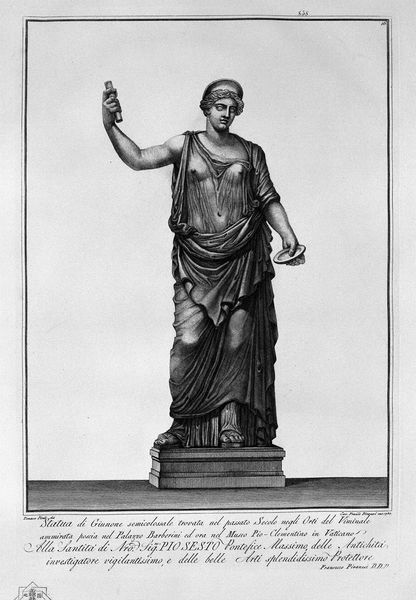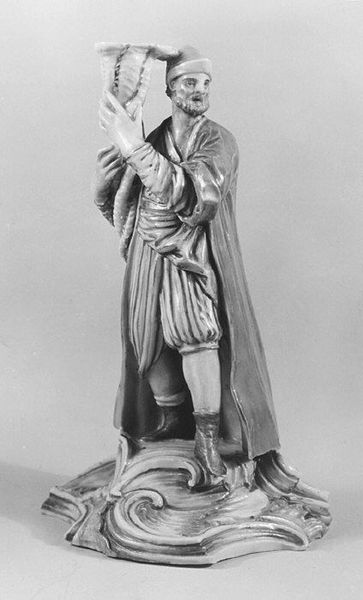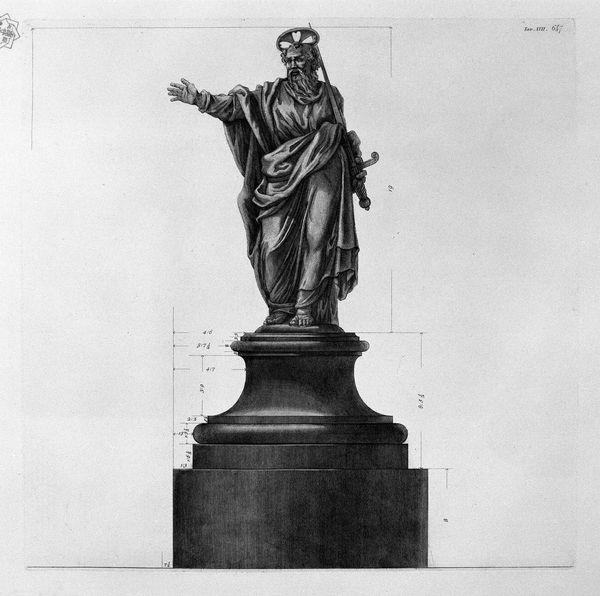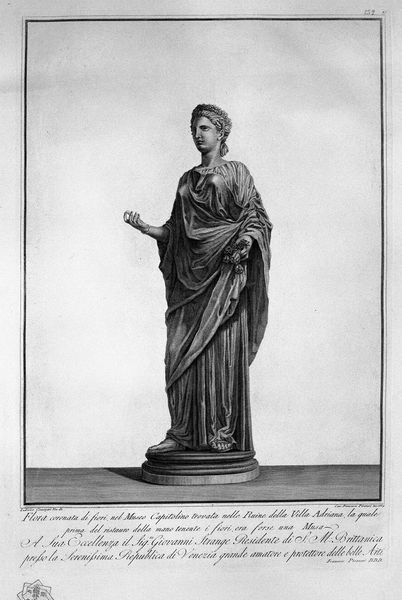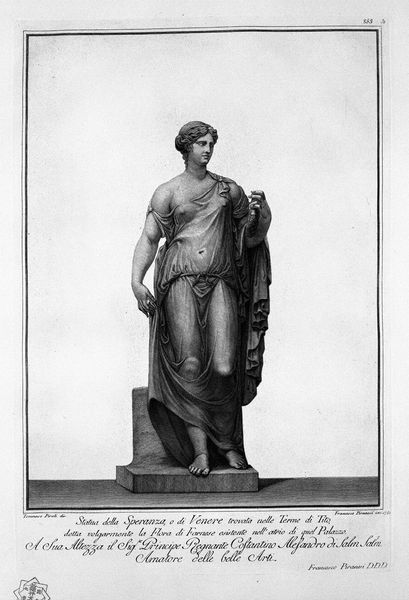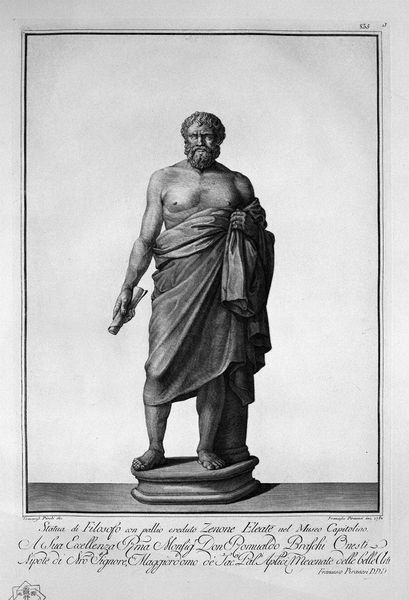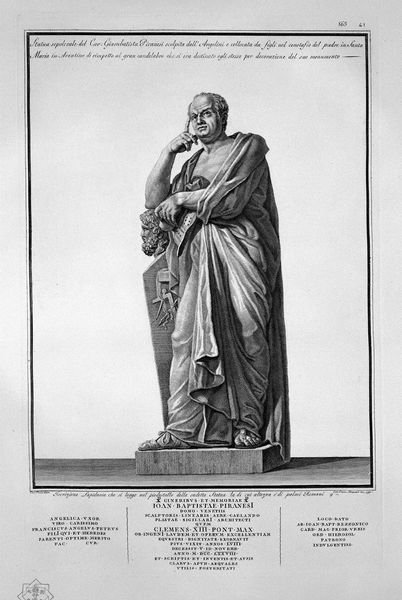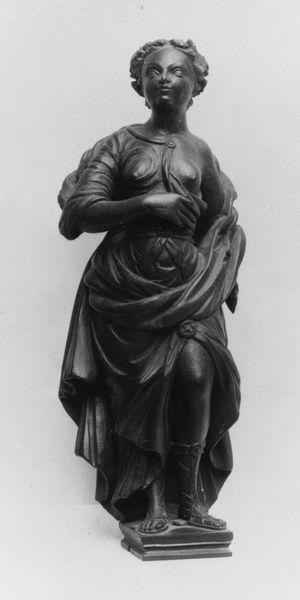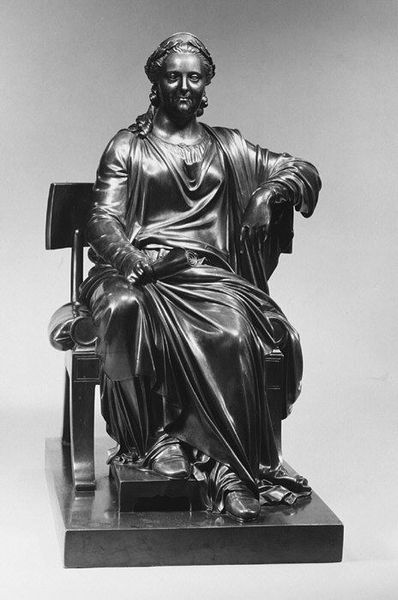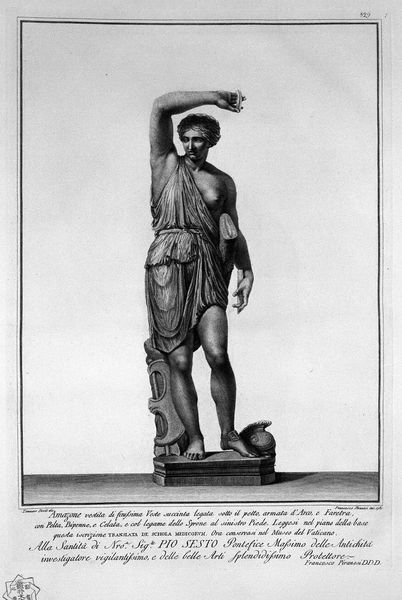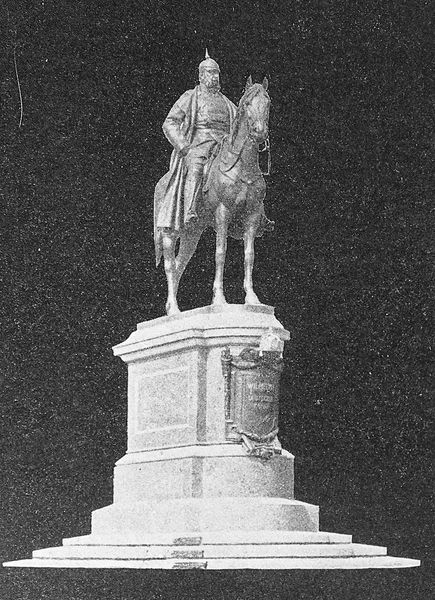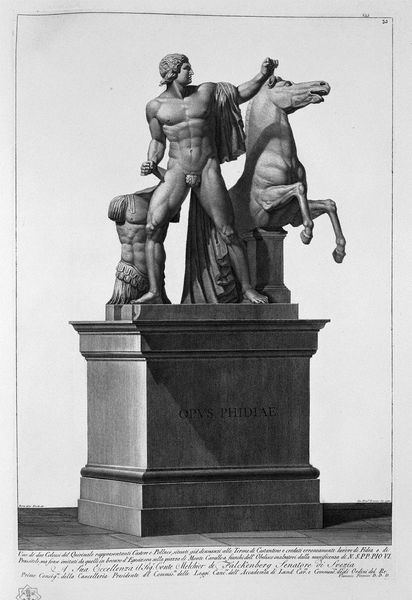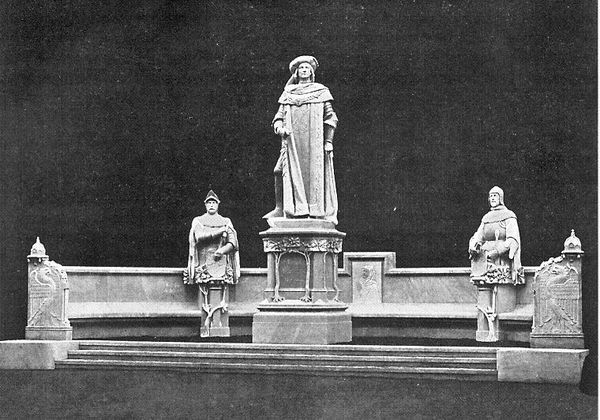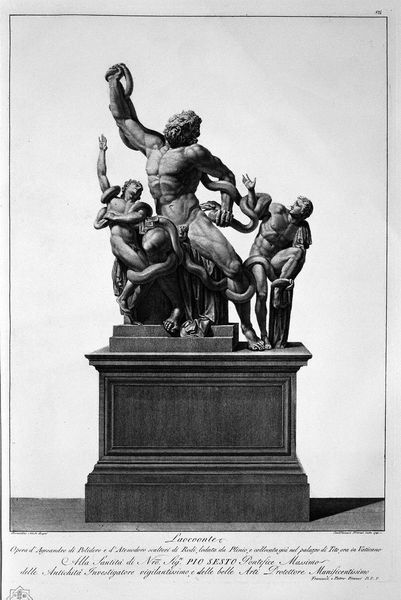
Statue of Vesta, or Mother Earth situated in the Villa Este in Tivoli
0:00
0:00
drawing, print, pencil, engraving
#
portrait
#
drawing
#
neoclacissism
#
statue
# print
#
pencil sketch
#
landscape
#
classical-realism
#
charcoal drawing
#
pencil drawing
#
pencil
#
charcoal
#
engraving
Copyright: Public domain
Editor: Here we have Giovanni Battista Piranesi's engraving, "Statue of Vesta, or Mother Earth situated in the Villa Este in Tivoli." The statue is incredibly detailed. I’m struck by how imposing it seems despite being an engraving. What's your perspective on it? Curator: This work speaks volumes about the 18th-century’s fascination with antiquity and the role of imagery in shaping cultural identity. Piranesi wasn't just documenting; he was actively participating in the Neoclassical movement's revival of interest in Roman virtue and grandeur. The Villa Este itself, filled with classical sculptures, was a kind of stage. Does this image perhaps prompt reflection on how museums and collections affect art reception? Editor: Absolutely. Presenting the statue in this precise, almost scientific manner lends it an air of authority and timelessness. Curator: Exactly. By representing the statue in this idealized form, Piranesi promotes specific interpretations of Roman history and power, shaping public perceptions of both the past and present. This also reflects the institutional authority associated with art at that time. What's your take on Vesta herself in this historical context? Editor: Seeing Vesta as Mother Earth here really grounds it. Knowing its place within Villa Este reframes its historical importance and influence in shaping opinions on artwork at the time. I hadn't considered the effect of Neoclassical art and museums! Curator: Precisely. We have jointly revealed how art plays an important role and has a significant cultural impact in both society and political areas, and also, how public institutions enhance particular cultural narratives and power structures through image selection.
Comments
No comments
Be the first to comment and join the conversation on the ultimate creative platform.
